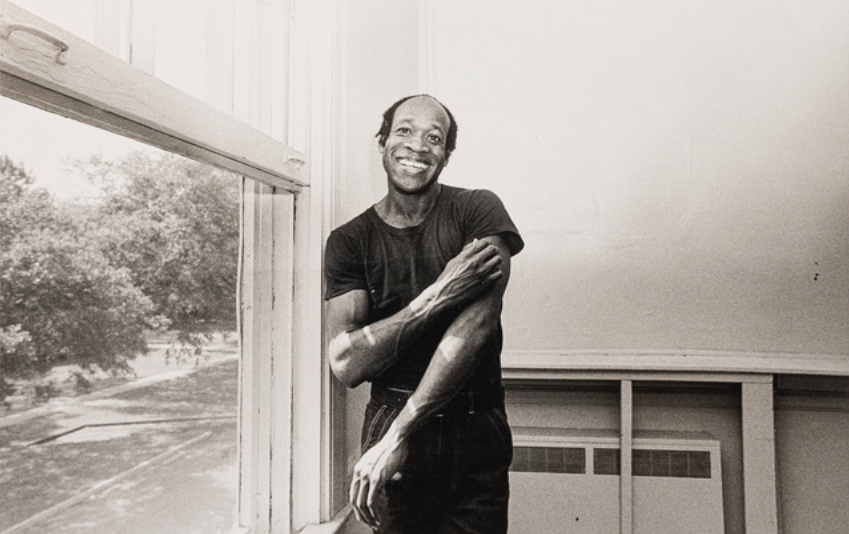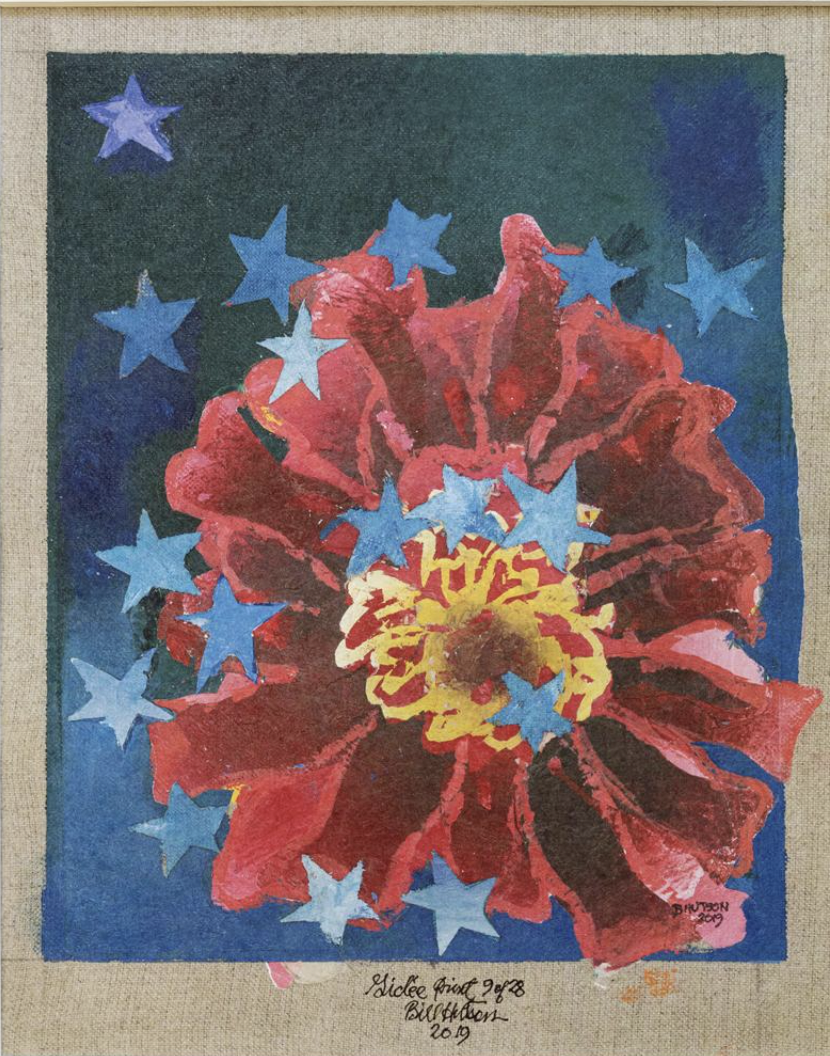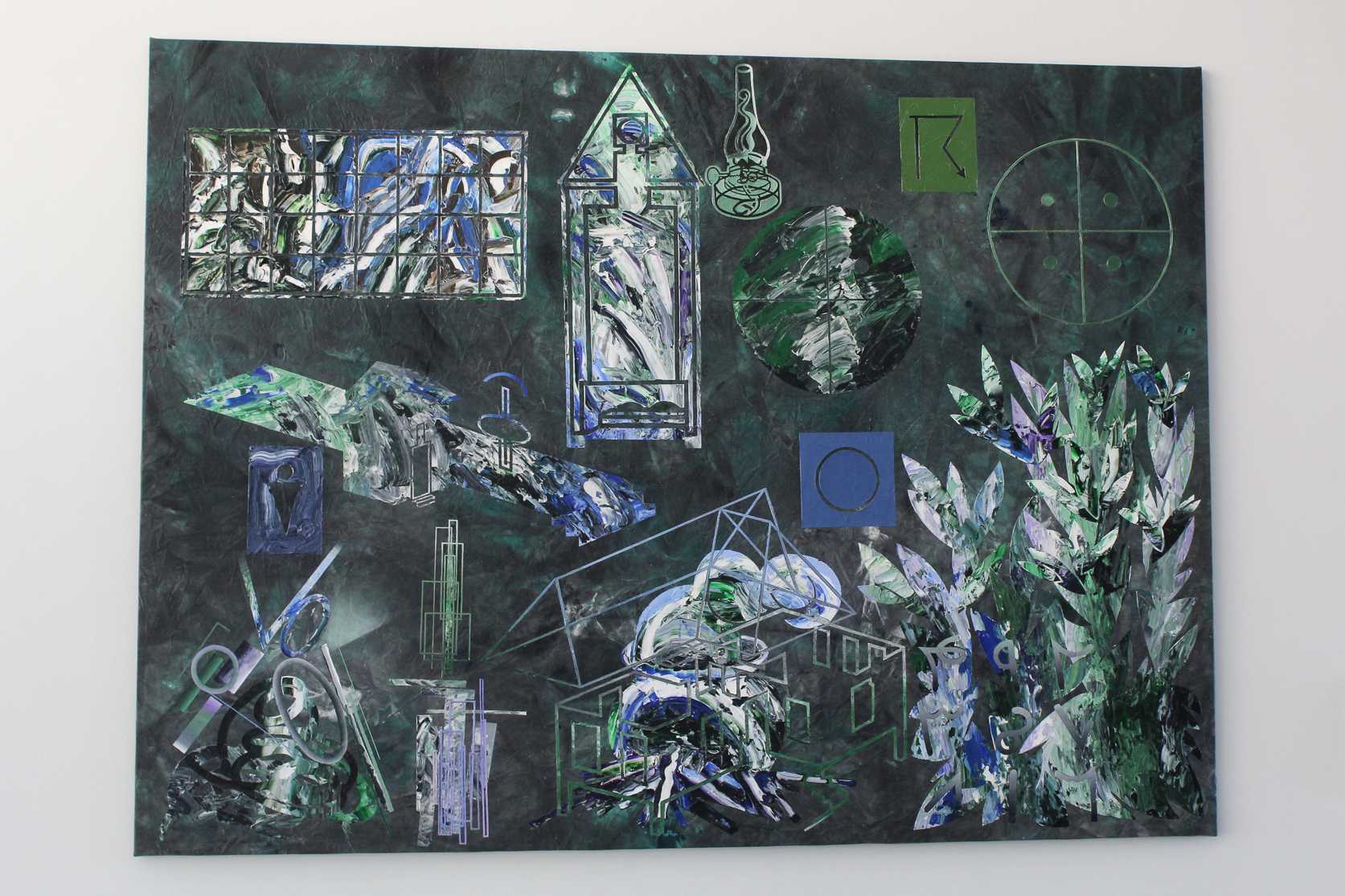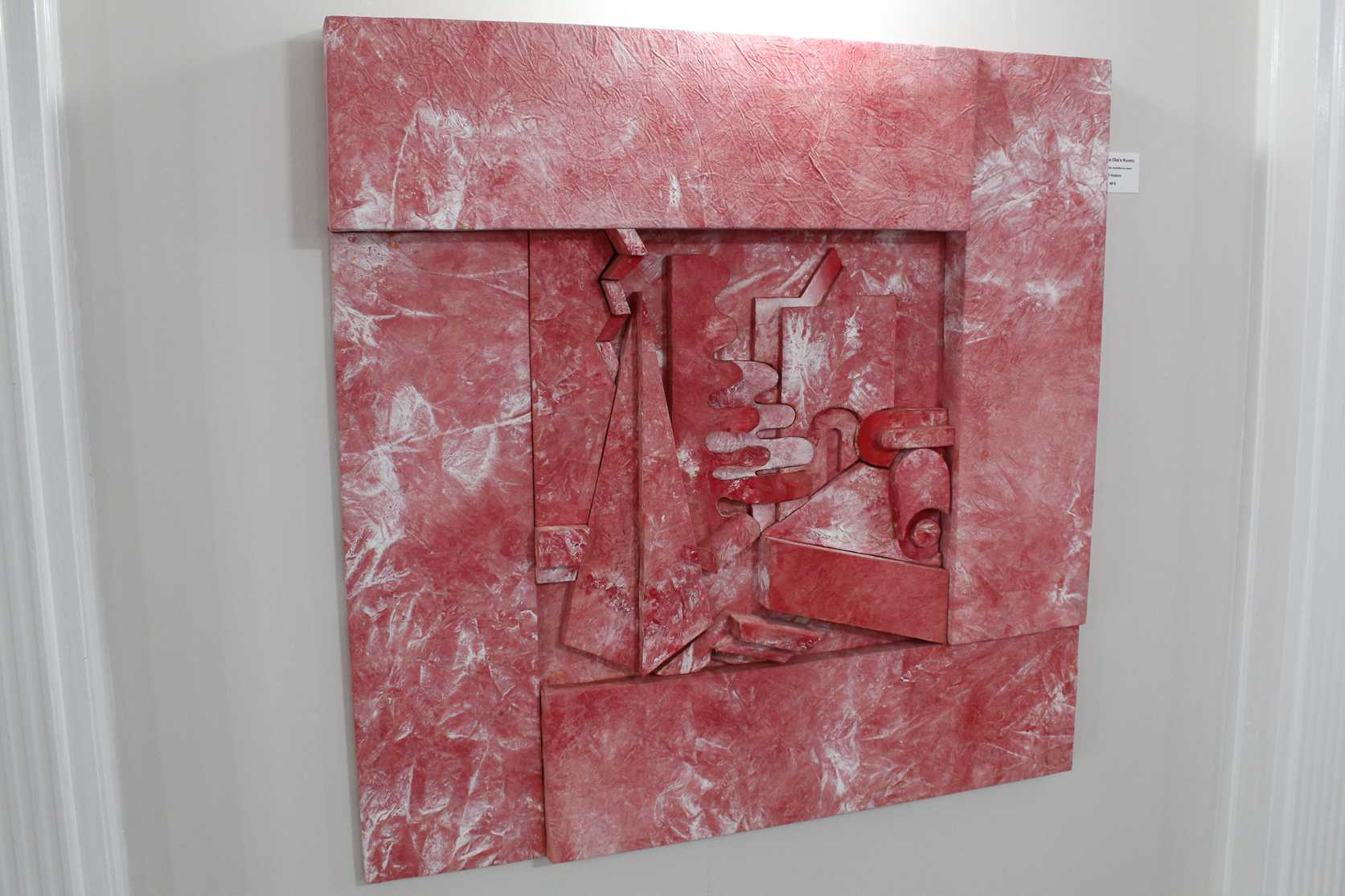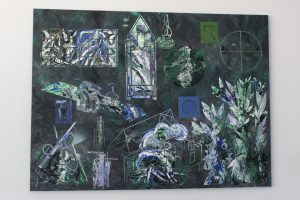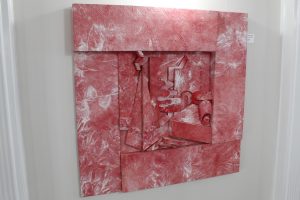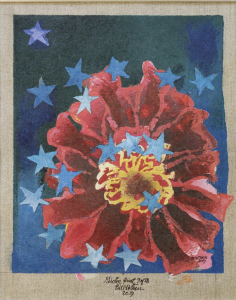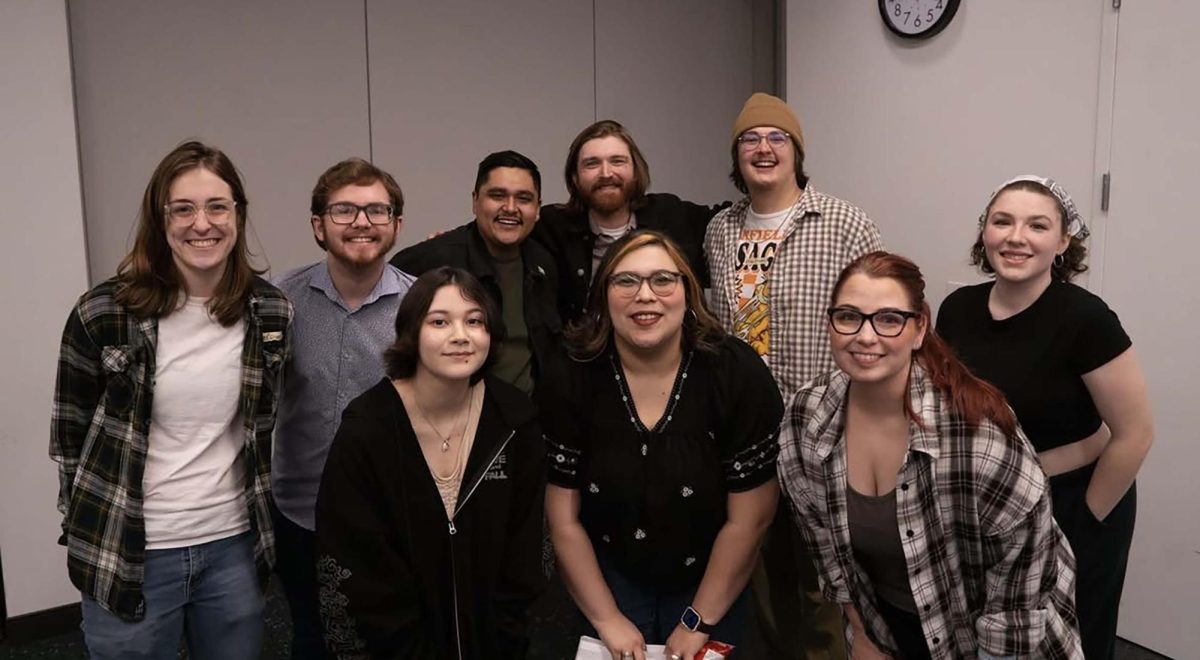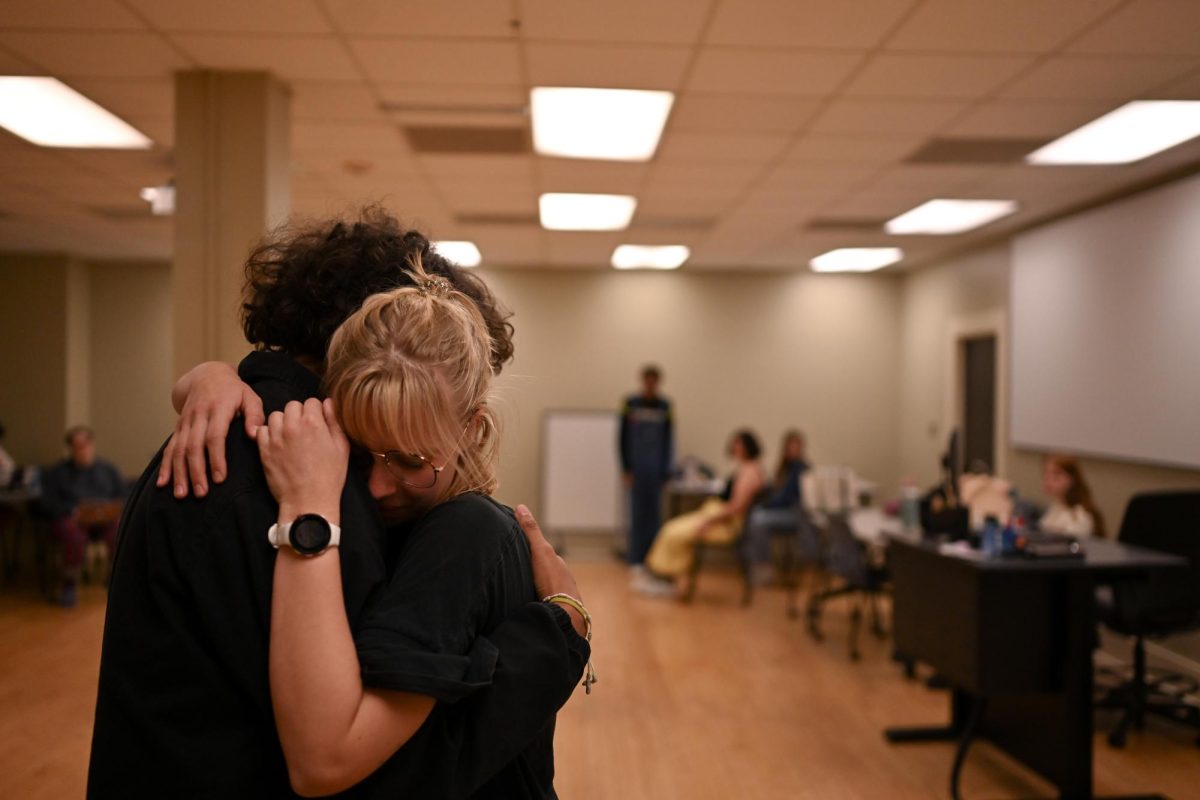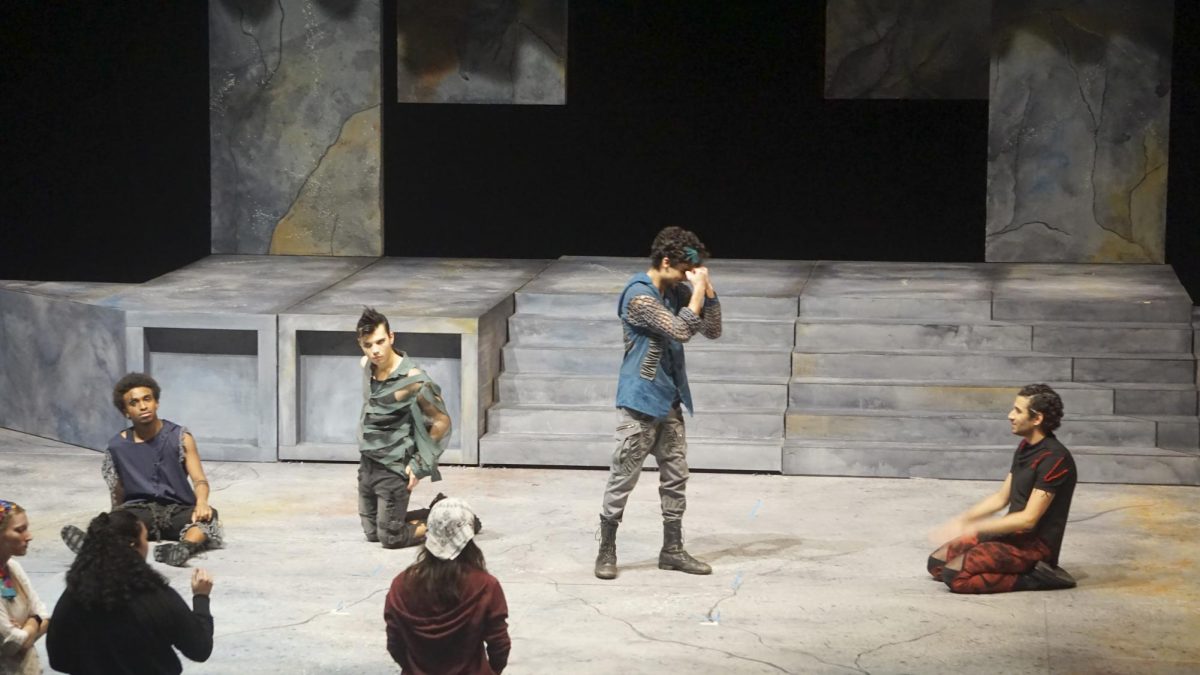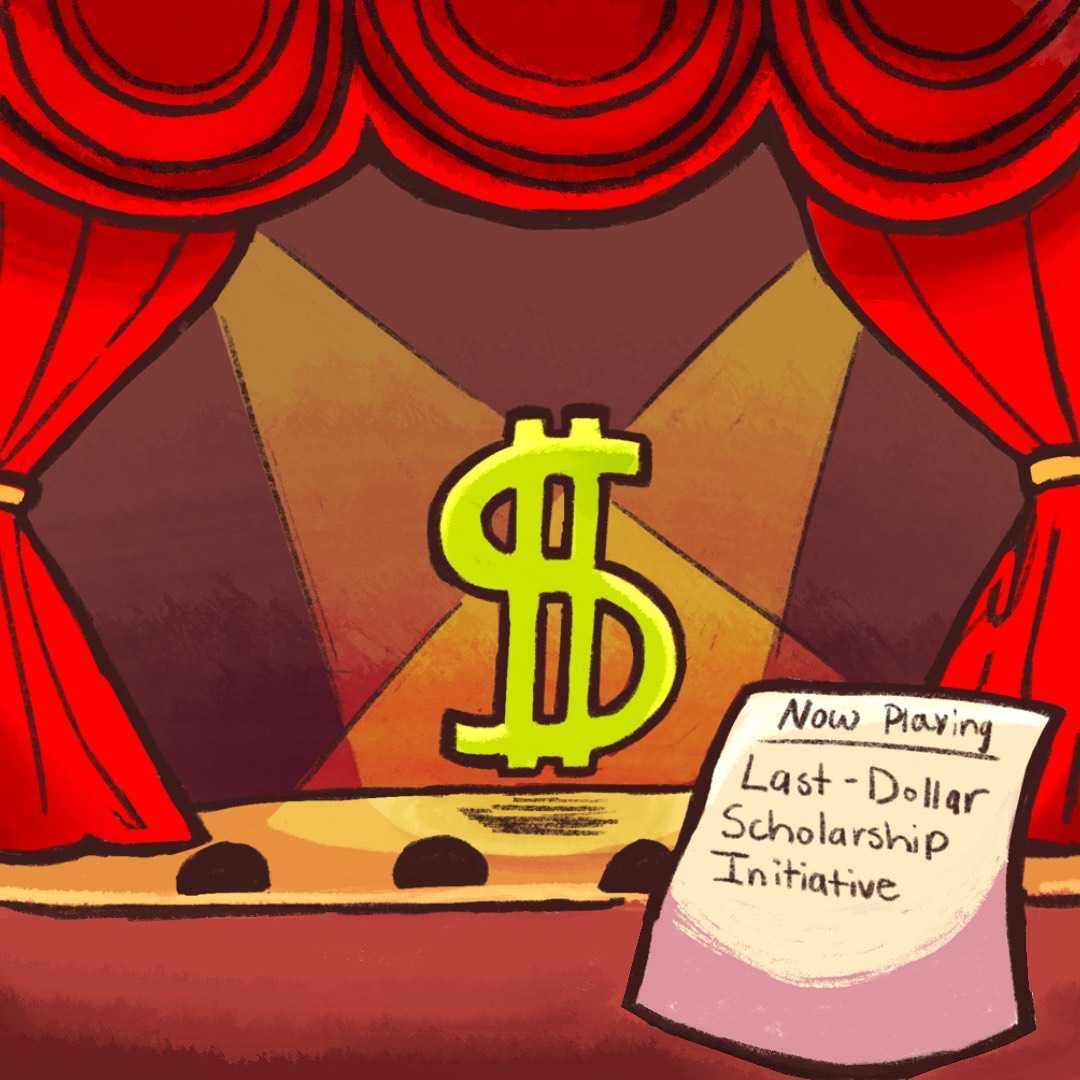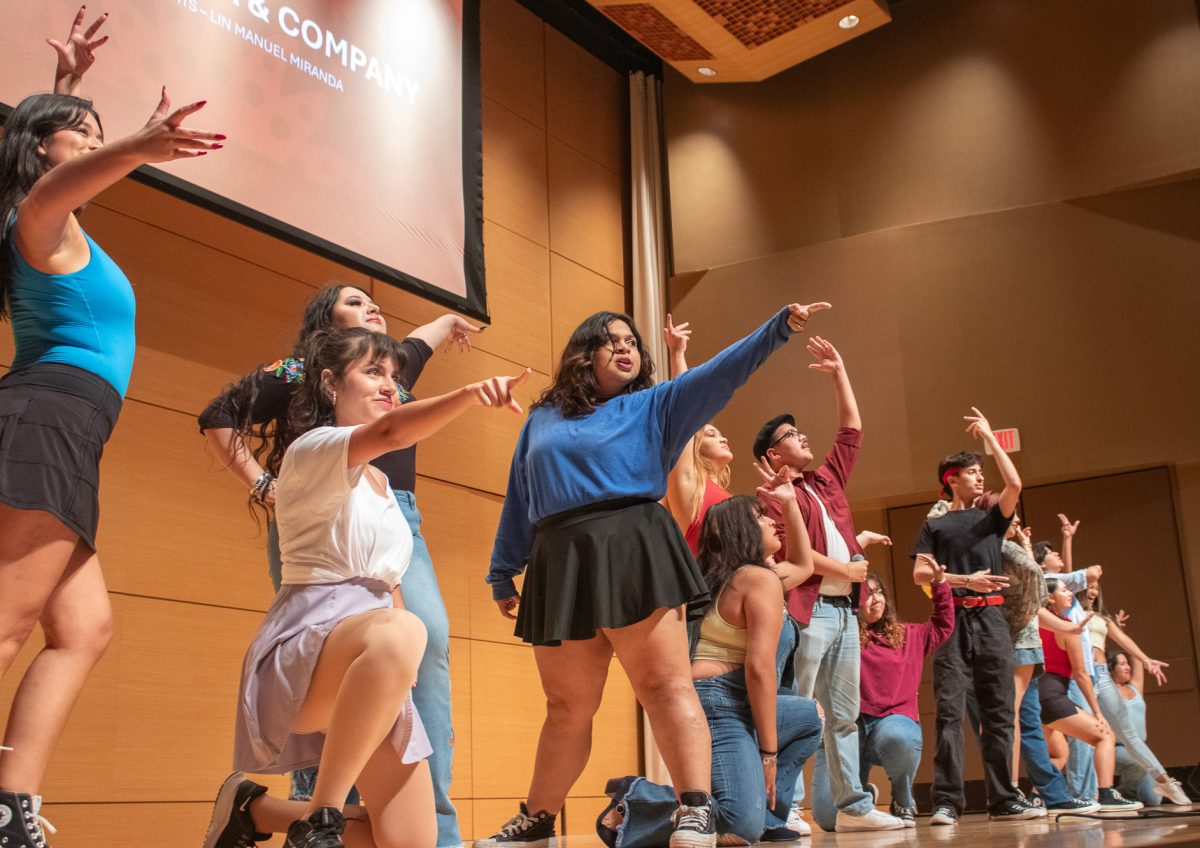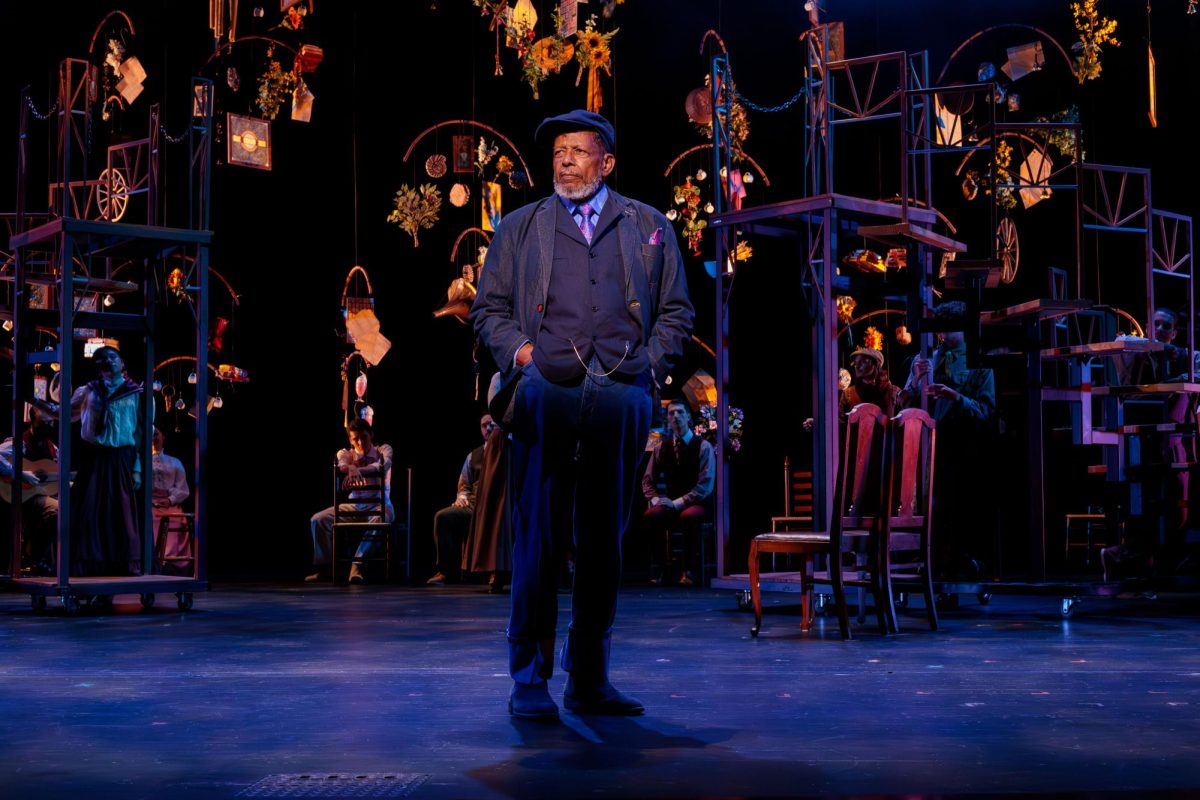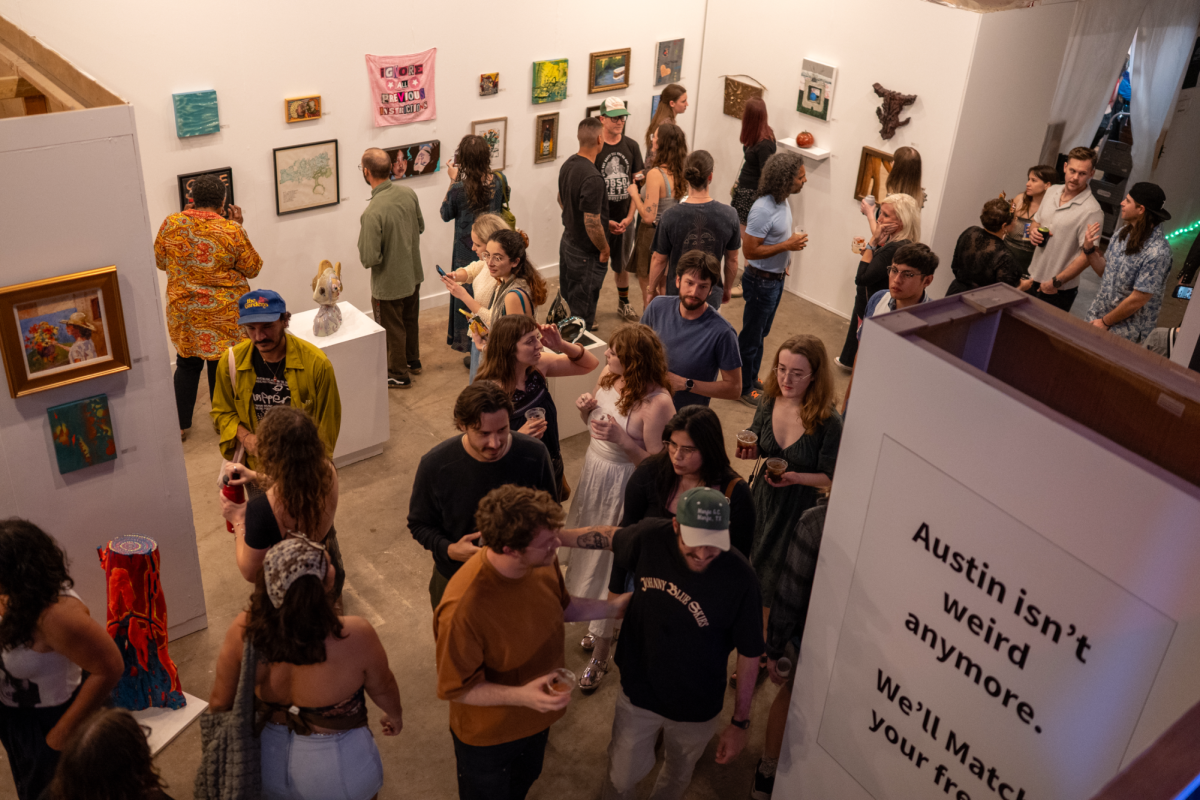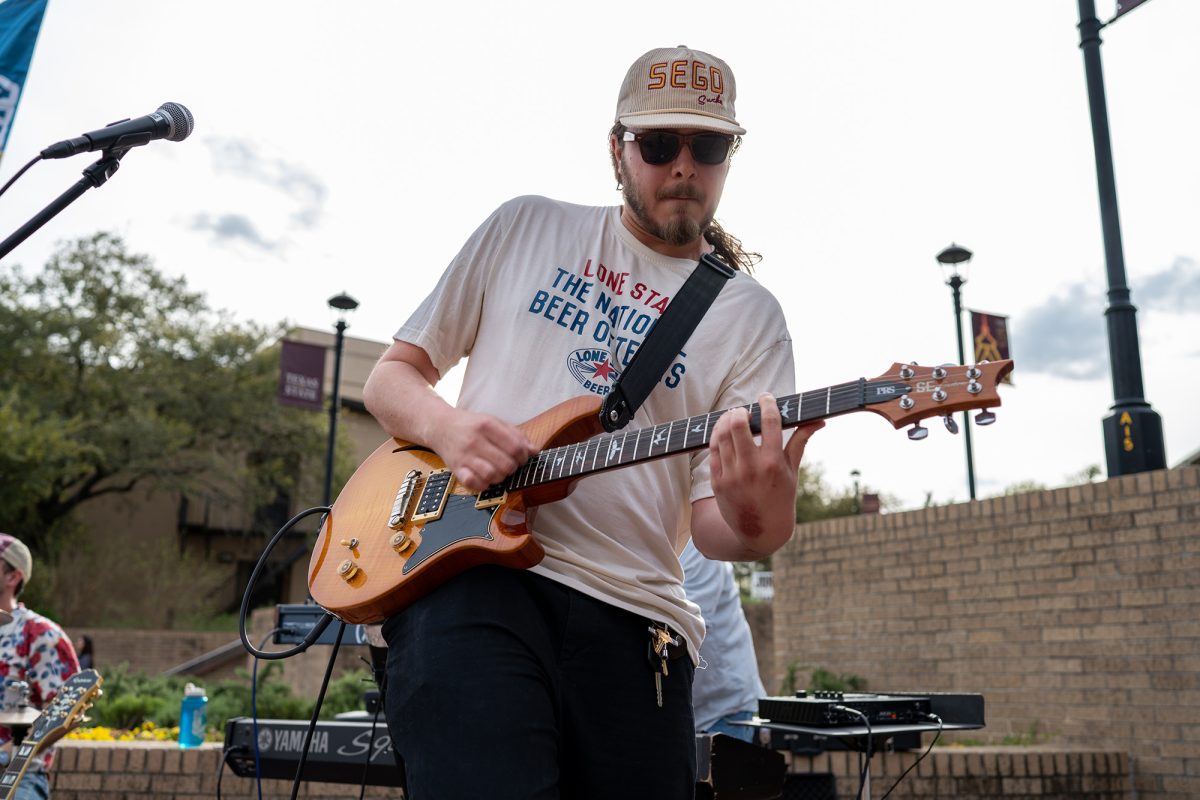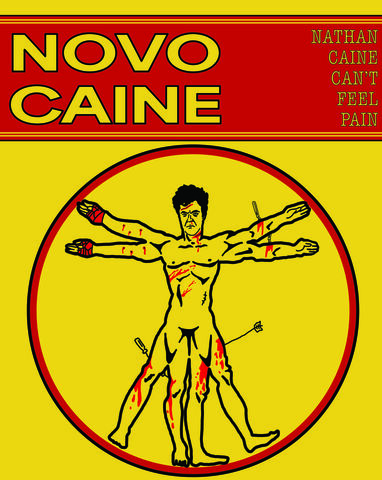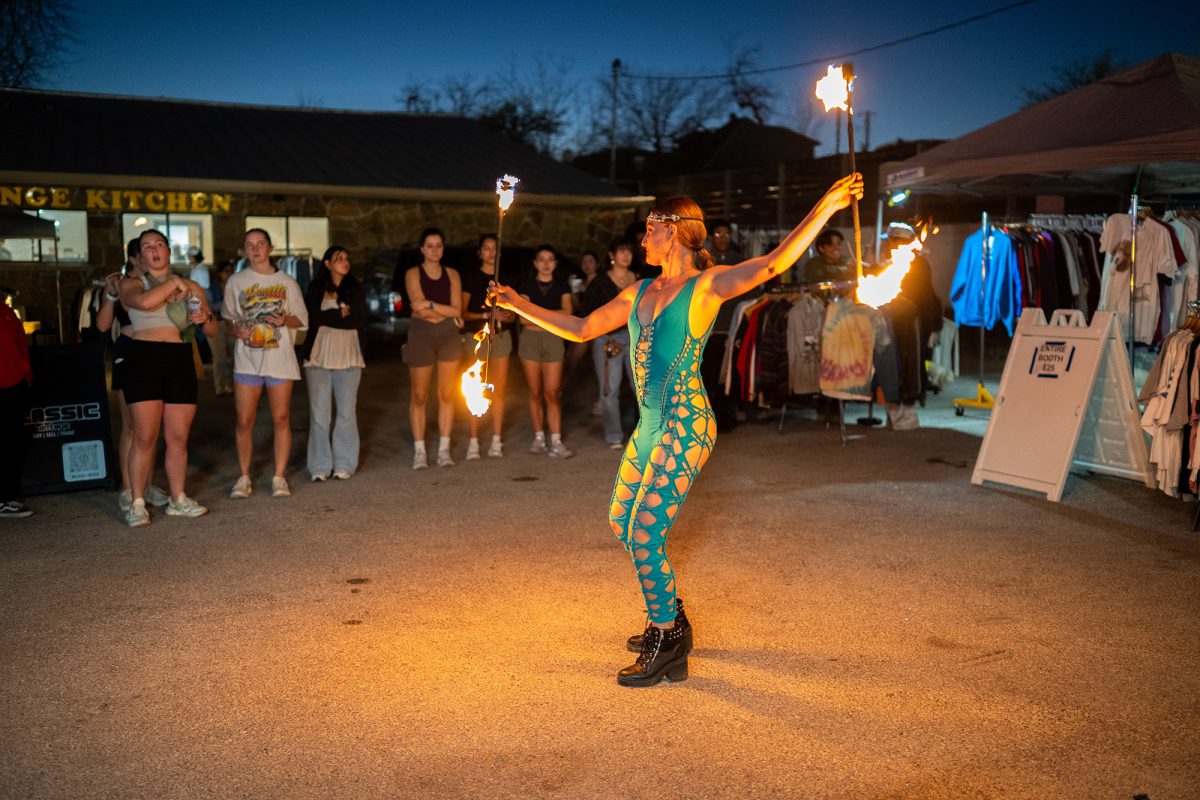Born in 1936, Bill Hutson grew up in a time when the community he lived in was racially segregated. Originally from San Marcos’ Dunbar neighborhood, Hutson would later become one of the most innovative and dynamic artists of his generation.
His breakthrough in the art world began after the San Marcos Record published his cartoon in January 1952. At the time, Hutson was only 15 years old.
In an effort to celebrate the artistic contributions of Hutson, galleries across town have collaborated to put on “The Art of Bill Hutson,” a city-wide exhibit in which over 60 of his pieces are being showcased throughout the Calaboose African American History Museum, the San Marcos Art League, the Texas State Galleries, the Price Center and the Walkers’ Gallery.
One of Hutson’s pieces, “Homestead with signs, symbols and numbers,” currently resides at the Texas State Galleries. The piece details the story of the house he grew up in on Centre Street in the Dunbar neighborhood. This is the first time the painting has been showcased in San Marcos, as it is normally on display at Franklin & Marshall College in Lancaster, Pennsylvania, where Hutson worked as an associate art professor for two decades.
Hutson’s house on Centre Street was originally owned by his grandmother and was then passed down to his parents who raised their children there.
“Of course, it was property we owned,” Hutson said. “It was a house we owned. And that is sort of an American dream realized, but it was more or less a dream and a nightmare at the same time for us because San Marcos was a very segregated town at that time.”
The piece not only tells the story about Hutson’s multi-generational household but also the experiences of growing up in the San Marcos community. The painting features images such as a teepee, a generic symbol used to represent Native Americans; a skeletal rendition of a shotgun house, representing the shotgun house Hutson was born and raised in; and a circle with a horizontal and vertical line, representing the cycle of life.
“One of the things that he writes about when he addresses that piece is the fact that this idea of homesteading in the cultural imagination within the United States is all about roots and making a place for yourself and pulling yourself up by your bootstraps,” Margo Handwerker, gallery director for Texas State Galleries, said. “But on the contrary, it’s actually also a very violent story and ideology about western expansion.”
Handwerker hopes the community-wide exhibit brings a greater awareness of art, culture and history to San Marcos as well as attention to Hutson’s work as a whole. One of the goals in creating these exhibitions was to encourage visitors to travel to different institutions across the city of San Marcos in order to experience the project in its entirety.
“One of the reasons why we thought collaborating with other organizations is its capacity building,” Handwerker said. “We can do more if we all come together in terms of resources, but it also creates this really great opportunity for people who wouldn’t otherwise come to campus or people on campus who wouldn’t otherwise go into town.”
A variety of Hutson’s pieces are inspired by his experiences of living in different places around the world. In 1963, he moved to New York after taking art classes in San Francisco. He spent the next four decades traveling to different countries to explore their art scenes and meet other artists. In 1973, he received a National Endowment for the Arts grant to visit Africa.
“It was a very [important] time of empowerment for Black art in New York,” said Linda Kelsey-Jones, curator and director of the Walkers’ Gallery at the San Marcos Public Library and curator at the Calaboose African American History Museum. “So, he traveled. The places he mostly went in this country were New York, California, Ohio, Pennsylvania. But he also traveled to Europe. He went to Paris and got to know the artists there. And all along he kept trying to find his own style and experimenting with different styles.”
Hutson’s collection at The Price Center features a six-piece installment of 3D images inspired by his time living in Nigeria and meeting the Oba (King) in the mid-1970s. The Calaboose exhibit features a piece titled “The Opening” which is inspired by his time on Gorée Island and is his representation of the African American dual experience
“A lot of his work is very abstract,” Handwerker said. “Most of its content is mostly related to African American history, but also a lot of his travels that he did in Africa. This feeling of like displacement or cultural belonging on the part of a lot of African Americans over many generations is hard to confront and describe [but] this work in its abstraction has the capacity to render these amorphous feelings in a way that can speak to all audiences.”
The San Marcos Art Center features a painting titled “Variations on a Marigold (With Scorpius) for Estee Mayim Altman” by Hutson in 2019, inspired by the daughter of one of Hutson’s former students. The painting, a flower with numerous stars arranged as the Scorpius Cosmos, is the only artwork of Hutson’s on loan from the artist’s own studio and the only one being sold as part of the event.
The goal of the city-wide exhibition is to highlight Hutson along with his artwork that carries historical references and the symbolism of his personal experiences. For Hutson, having his artwork showcased around his hometown is an honor and he is grateful to share his passion with others.
“If I hadn’t painted, I would die,” Hutson said. “I don’t know anything else to do that gives me as much satisfaction, contentment and will to carry on as granted. And so, I want the people who consume [the paintings] to enjoy it, taste it and appreciate it.”
For more information about the city-wide exhibition of The Art of Bill Hutson, visit the San Marcos Convention and Visitor Bureau website.
Categories:
City-wide exhibit celebrates artwork of San Marcos native Bill Hutson
Brynn Sumers, Life and Arts Contributor
February 15, 2022
“Portrait of Bill Hutson Next to a Window” by A.J. Meek is currently on view at the Calaboose African American History Museum
0
Donate to The University Star
Your donation will support the student journalists of Texas State University. Your contribution will allow us to purchase equipment and cover our annual website hosting costs.
More to Discover



